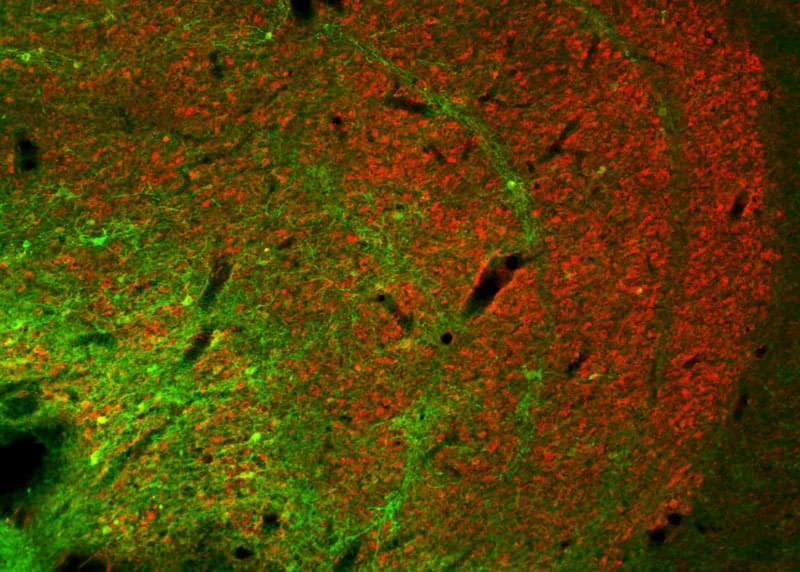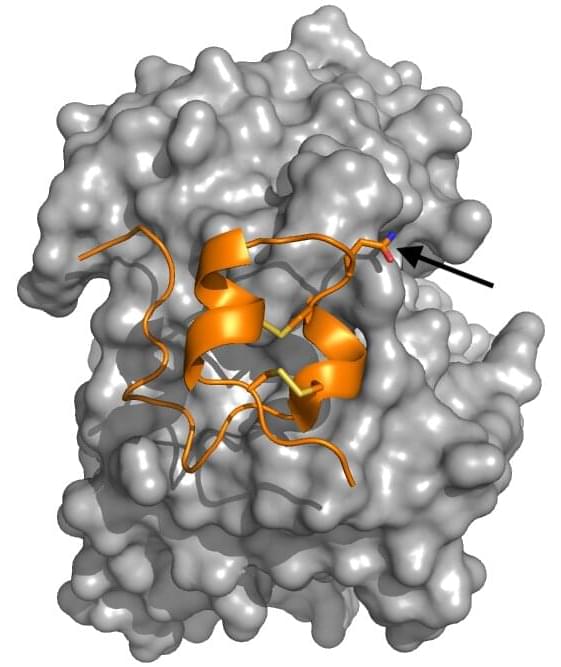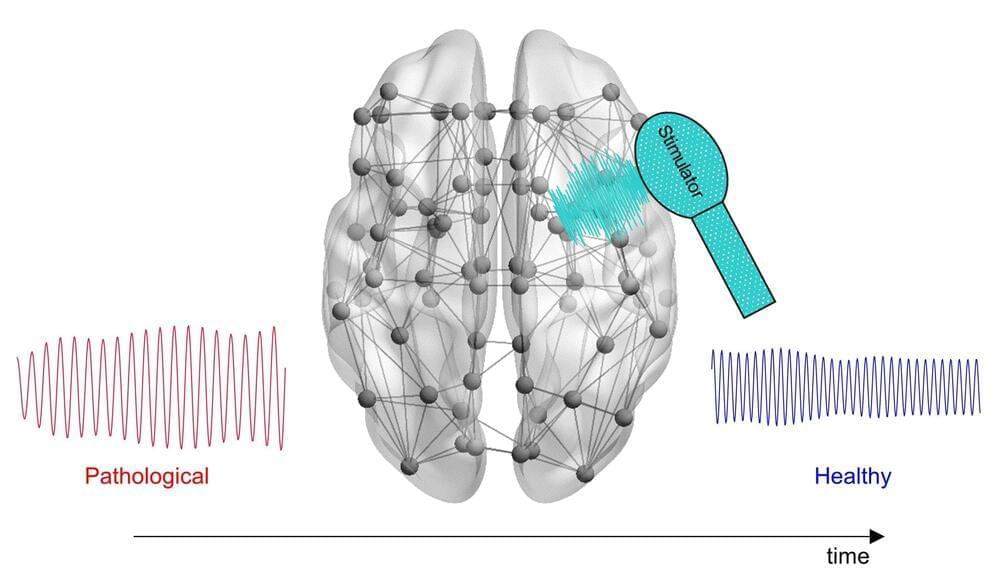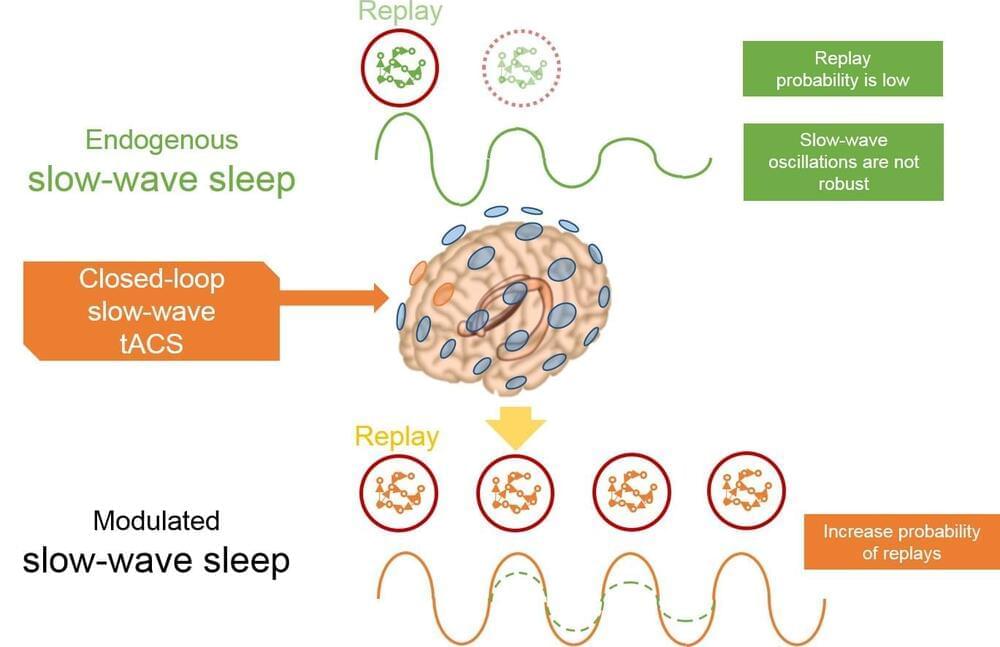Page 5014
Mar 11, 2022
Optogenetics reveals new insights into circuits of the brain
Posted by Dan Breeden in categories: biotech/medical, genetics, neuroscience
To date, scientists have largely been in the dark with regard to how individual circuits operate in the highly branched networks of the brain. Mapping these networks is a complicated process, requiring precise measurement methods. For the first time, scientists from the Max Planck Institute for Biological Cybernetics in Tübingen, Germany, together with researchers from the Ernst Strüngmann Institute in Frankfurt and Newcastle University in England, have now functionally proven a so far poorly understood neural connection in the visual system of monkeys using optogenetic methods. To this end, individual neurons were genetically modified so that they became sensitive to a light stimulus.
For decades microstimulation was the method of choice for activating neurons – the method proved to be reliable and accurate. That is why it is also used medically for deep brain stimulation. The Tübingen-based scientists were now able to show that optogenetics, a biological technique still in its infancy, delivers comparable results.
With optogenetics it is possible to directly influence the activity of neurons by light. To do this individual neurons are genetically modified with the help of viruses to express light-sensitive ion channels in their cell membrane. Through blue light pulses delivered directly into the brain, the modified neurons can then be systematically activated.
Mar 11, 2022
Scientists cast light on the brain’s social cells
Posted by Dan Breeden in categories: chemistry, neuroscience
Picture yourself hovering over an alien city with billions of blinking lights of thousands of types, with the task of figuring out which ones are connected, which way the electricity flows and how that translates into nightlife. Welcome to the deep brain.
Even in an era rapidly becoming known as the heyday of neuroscience, tracing the biochemical signaling among billions of neurons deep in the brain has remained elusive and baffling.
A team of Stanford University researchers managed to map out one such connection, buried inside the brain of a living, moving mammal as they manipulated its behavior. The feat offers an unprecedented close-up of the genesis of social behavior on a cellular level, and could offer insights into psychiatric puzzles such as autism, depression and anxiety.
Mar 11, 2022
Study charts development of emotional control in teens
Posted by Dan Breeden in categories: biotech/medical, neuroscience
In the midst of all the apparent tumult, intense emotion, and occasional reckless behavior characterizing the teenage years, the brain is, in fact, evolving and developing the neural circuits needed to keep emotions in check. Research in the June 8, 2016 issue of The Journal of Neuroscience describes how the ability to control emotions moves from one brain area to another as teens mature into adults, offering an opportunity to understand how disorders related to emotional control emerge.
“Our study opens the way for a better understanding of the neurobiology behind adolescent behavior in emotionally arousing situations,” said study author Anna Tyborowska of Radboud University Nijmegen in the Netherlands. “The findings could also have important clinical implications [as] many psychiatric disorders emerge during adolescence and are characterized by problems with emotional action control.”
Previous research links the spike in sensation-seeking and impulsive behavior during adolescence to the delayed maturation of the prefrontal cortex, a region of the brain involved in reasoning, planning, and decision-making. Study authors Inge Volman, Ivan Toni, and Karin Roelofs previously demonstrated the importance of the anterior prefrontal cortex in emotional control in adults. However, it has not been clear whether and how the delayed development of the prefrontal cortex affects emotional control during adolescence.
Mar 11, 2022
New study confirms bioengineered RSV protein vaccine evokes protective immune response
Posted by Dan Breeden in categories: bioengineering, biotech/medical
Close interactions with infectious disease set both University of California, Santa Cruz graduate student Ana Nuñez Castrejon and Associate Professor of Biomolecular Engineering Rebecca DuBois on the path of studying respiratory syncytial virus (RSV), a common and sometimes dangerous respiratory disease for which there is not currently a vaccine. The two researchers recently marked a major milestone in their effort to create an effective vaccine for the virus with the publishing of their paper “Structure-based design and antigenic validation of respiratory syncytial virus G immunogens” in the Journal of Virology.
For fifth-year Baskin Engineering student and the paper’s lead author Nuñez Castrejon, a bout of pneumonia that lingered for months when she was an undergraduate student sparked her interest in studying respiratory illnesses. For DuBois, watching her child go through a serious infection of RSV, which can cause severe respiratory infections in infants/children and the elderly, led her to study the disease.
“We have all of these wonderful childhood vaccines that have eliminated so much childhood disease, but there are still a lot of infectious diseases that are really tough on children, and RSV is one of those that causes hospitalizations in children,” DuBois said.
Mar 11, 2022
New computational tool could help optimize treatment of Alzheimer’s disease
Posted by Dan Breeden in categories: biotech/medical, computing, neuroscience
Scientists have developed a novel computational approach that incorporates individual patients’ brain activity to calculate optimal, personalized brain stimulation treatment for Alzheimer’s disease. Lazaro Sanchez-Rodriguez of the University of Calgary, Canada, and colleagues present their new framework in PLOS Computational Biology.
Electrical stimulation of certain parts of the brain could help promote healthy activity in neural circuits impaired by Alzheimer’s disease, a neurodegenerative condition. This experimental treatment has shown some promise in clinical trials. However, all patients currently receive identical treatment protocols, potentially leading to different outcomes according to individual variations in brain signaling.
To investigate the possibility of personalized brain stimulation, Sanchez-Rodriguez and colleagues took a theoretical approach. They built a computational tool that incorporates patients’ MRI scans and physiological brain signaling measurements to calculate optimal brain stimulation signals, with the goal of delivering efficient, effective personalized treatment.
Mar 11, 2022
Low strength brain stimulation may be effective for depression
Posted by Dan Breeden in categories: biotech/medical, neuroscience
Brain stimulation treatments, like electroconvulsive therapy (ECT) and transcranial magnetic stimulation (TMS), are often effective for the treatment of depression. Like antidepressant medications, however, they typically have a delayed onset. For example, a patient may receive several weeks of regular ECT treatments before a full response is achieved.
Thus, there is an impetus to develop antidepressant treatments that act to rapidly improve mood.
Low field magnetic stimulation (LFMS) is one such potential new treatment with rapid mood-elevating effects, as reported by researchers at Harvard Medical School and Weill Cornell Medical College.
Mar 11, 2022
Epileptic seizures and depression may share a common genetic cause, study suggests
Posted by Dan Breeden in categories: biotech/medical, genetics, neuroscience
From the time of Hippocrates, physicians have suspected a link between epilepsy and depression. Now, for the first time, scientists at Rutgers University-New Brunswick and Columbia University have found evidence that seizures and mood disorders such as depression may share the same genetic cause in some people with epilepsy, which may lead to better screening and treatment to improve patients’ quality of life.
The scientists studied dozens of unusual families with multiple relatives who had epilepsy, and compared the family members’ lifetime prevalence of mood disorders with that of the U.S. population.
They found an increased incidence of mood disorders in persons who suffer from a type of the condition called focal epilepsy, in which seizures begin in just one part of the brain. But mood disorders were not increased in people with generalized epilepsy, in which seizures start on both sides of the brain.
Mar 11, 2022
Overnight brain stimulation improves memory
Posted by Dan Breeden in categories: biotech/medical, neuroscience
New research in humans demonstrates the potential to improve memory with a non-invasive brain stimulation technique delivered during sleep. The results, published in JNeurosci, come from a project funded by the United States Department of Defense that aims to better understand the process of memory consolidation, which could translate into improved memory function in both healthy and patient populations.
The transfer of memories from the hippocampus to the neocortex for long-term storage is thought to be enabled by synchronization of these parts of the brain during sleep. Nicholas Ketz, Praveen Pilly, and colleagues at University of New Mexico sought to enhance this natural process of overnight reactivation or neural replay to improve memory with a closed-loop transcranial alternating current stimulation system matching the phase and frequency of ongoing slow-wave oscillations during sleep.
Participants were trained and tested on a realistic visual discrimination task in which they had to detect potentially threatening hidden objects and people such as explosive devices and enemy snipers. The researchers found that when participants received stimulation during overnight visits to their sleep laboratory, they showed improved performance in detecting targets in similar but novel situations the next day compared to when they did not receive the stimulation, suggesting an integration of recent experience into a more robust and general memory. Overnight memory changes correlated with stimulation-induced neural changes, which could be used to optimize stimulation in future applications. These findings provide a method for enhancing memory consolidation without disturbing sleep.
Mar 11, 2022
Global death toll of COVID-19 pandemic may be more than three times higher than official records, estimates indicate
Posted by Dan Breeden in category: biotech/medical
More than three times as many people may have died worldwide as a result of the pandemic than official COVID-19 death records suggest, according to an analysis published in The Lancet.
While the official COVID-19 death toll was 5.9 million between January 1, 2020, and December 31, 2021, the new study estimates 18.2 million excess deaths occurred over the same period, suggesting the full impact of the pandemic may have been far greater.
Excess deaths—the difference between the number of recorded deaths from all causes and the number expected based on past trends—are a key measure of the true death toll of the pandemic. While there have been several attempts to estimate excess mortality from COVID-19, most have been limited in geographical scope by the availability of data.


















